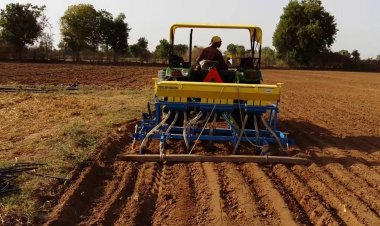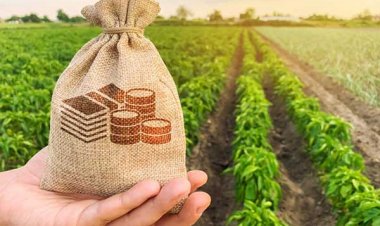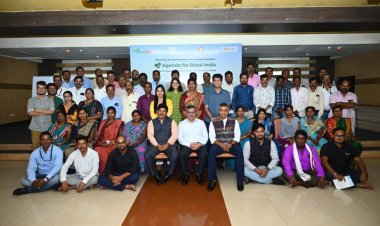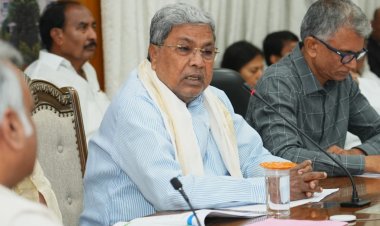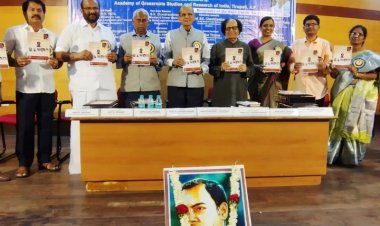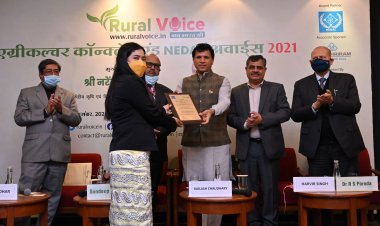Union Budget 2023-24: Will certain subsidies remain or go?
The government may cut fertilizer subsidies to lower the budget deficit after having already spent more than Rs 2.2trn on fertilizer subsidies this fiscal, given the fact that India imports about a third of its fertilizer requirements from other countries. Speculation is rife that the fertilizer subsidy bill could be slashed to Rs 1-1.5trn for the 2023-24 fiscal year starting April. Officials expect fertilizer costs to come down globally and domestic production to increase. This move will help India cut its budget deficit.

The government may cut fertilizer subsidies to lower the budget deficit after having already spent more than Rs 2.2trn on fertilizer subsidies this fiscal, given the fact that India imports about a third of its fertilizer requirements from other countries.
Speculation is rife that the fertilizer subsidy bill could be slashed to Rs 1-1.5trn for the 2023-24 fiscal year starting April. Officials expect fertilizer costs to come down globally and domestic production to increase. This move will help India cut its budget deficit.
After Russia’s invasion of Ukraine, food and energy prices have been soaring. On food, fertilizers and fuel, the government has already spent 70 per cent more than it had allocated in the last budget.
Experts say that if the government spends less on subsidizing fertilizers in the upcoming budget, it could lead to higher inflation. If the government cuts subsidies, which is a reimbursement to companies for selling fertilizers at below-market prices, farmers will have to bear higher costs. It would lead to higher inflation.
It was previously reported that fertilizer subsidy will rise to Rs 2.3-2.5 lakh crore in this fiscal but the bill may fall by 25 per cent in the 2023-24 financial year with moderation in global prices.
This estimate was according to the Fertilizer Association of India (FAI), which had expressed concern that the fixed cost of urea had not been increased, thereby affecting the viability of urea plants. FAI said that the fertilizer industry was running on a very thin margin, which was hampering new investments in this sector.
Food and fertilizer subsidies alone account for about one-eighth of India's total budget spending of Rs 39.45 lakh crore this fiscal year, but reductions in food subsidies in particular may prove politically sensitive with elections looming on the horizon.
Reports say the government aims to cut spending on food and fertilizer subsidies to Rs 3.7 lakh crore ($44.6bn) in the fiscal year from April, down 26 per cent from this year, to rein in a fiscal deficit that ballooned during the Covid-19 pandemic.
The government expects to budget around Rs 2.3 lakh crore for food subsidies in the coming fiscal year, compared with Rs 2.7 lakh crore for the current year to March 31.
Spending on fertilizer subsidies will likely fall to about Rs 1.4 lakh crore, according to an unconfirmed report. There was no comment from the finance ministry, while the food and fertilizer ministries too have maintained a studied silence.
A large part of the savings will come from the end of a Covid-19-era free food scheme, which will be replaced with a lower-spending programme. In other words, it will effectively reduce by half the free rations available to the poor in a year.
The free food programme was implemented at the peak of the pandemic to ensure food security for the vulnerable population. In December 2022, the government discontinued the free food programme and instead decided to provide free foodgrains under the existing public distribution system.
This is likely to reduce the food subsidy to 0.8 per cent of the GDP. Further, global commodity prices, which rose sharply in 2022 on the back of the Russia-Ukraine conflict, have since normalized and the outgo on fertilizer subsidies is likely to decline in FY24.
The reduction in fertilizer subsidies is also driven by expectations of lower crude oil prices and the government's revised gas procurement policy for fertilizer companies, which came into effect earlier this month.
The subsidy requirements witnessed a sharp increase in FY23, driven by elevated prices of international raw materials and finished fertilizers amid high gas prices.
Credit rating agency ICRA expects the fertilizer subsidy allocation for FY24 to remain elevated — upwards of Rs 2trn — assuming some moderation in feedstock prices and savings through procurement of a part of the gas from the domestic spot market.
The subsidy numbers will be announced on February 1, when Finance Minister Nirmala Sitharaman presents the Union Budget for FY24 in Parliament as the final full-year budget under the current administration before the national elections in mid-2024.
With a series of state elections looming, besides the 2024 Lok Sabha polls, the government is eager to tame its fiscal deficit, which is targeted at 6.4 per cent of GDP for the current fiscal year. But that is far above the average of 4-4.5 per cent over the past decade, excluding the pandemic years when spending surged and the ratio peaked at 9.3 per cent.
Given the general elections scheduled to take place in 2024, global investment firm Goldman Sachs expects the government to increase rural and welfare spending as seen in pre-election budgets in FY09, FY14 and FY19.
“In FY24, we expect current expenditure (excluding interest and subsidy) to be at 7.3 per cent of GDP. Rural employment and housing are likely to be in focus," it said.
The FY24 Budget is expected to have a continued focus on the farm sector, including a focus on initiatives to improve crop realizations and non-farm income. With agriculture remaining the focus, the agri-input sector, i.e. agrochemicals, fertilizers, etc., is expected to benefit.
The government may not allocate the full amount of the expected subsidy at the outset in the Budget for FY24 and may calibrate the allocation during the course of the year, as in the past, depending on the evolving subsidy requirements.
This current fiscal witnessed a lot of turbulence in terms of geopolitical issues, gas availability and erratic flow of subsidies. Lowering the import duties on raw materials like phosphoric acid and ammonia to improve the competitiveness of domestic phosphatic fertilizer manufacturers has been a long-pending industry demand along with the reduction of import duty on LNG for the urea industry, as the consumption of the latter is on a steady rise.
ICRA also expects the Government of India to develop a road map to increase the balanced use of fertilizers in the country and reduce dependence on particular fertilizers.
The Budget is also expected to focus on the increased use of environment-friendly nano-fertilisers, which will help in saving subsidies in the Budget.



 Join the RuralVoice whatsapp group
Join the RuralVoice whatsapp group



















